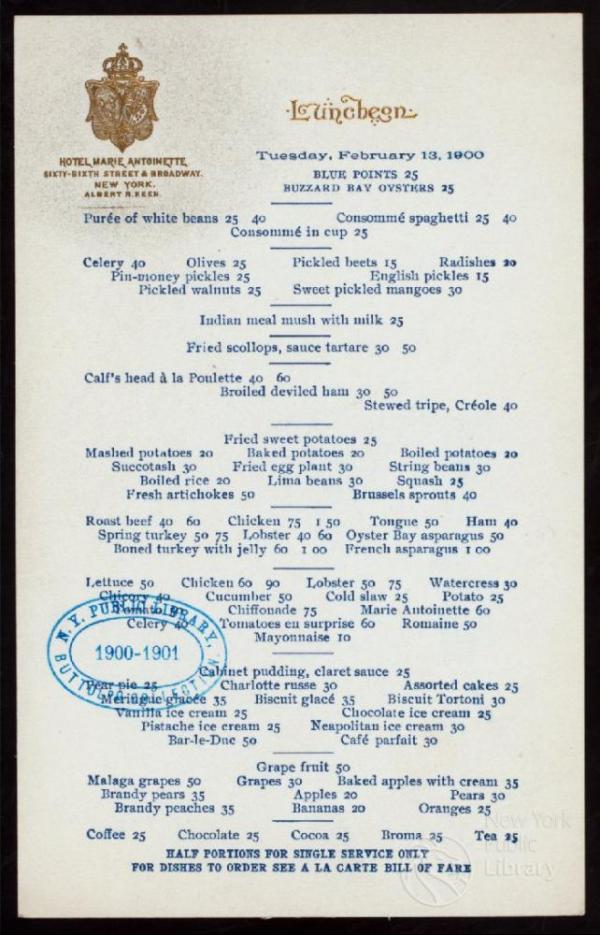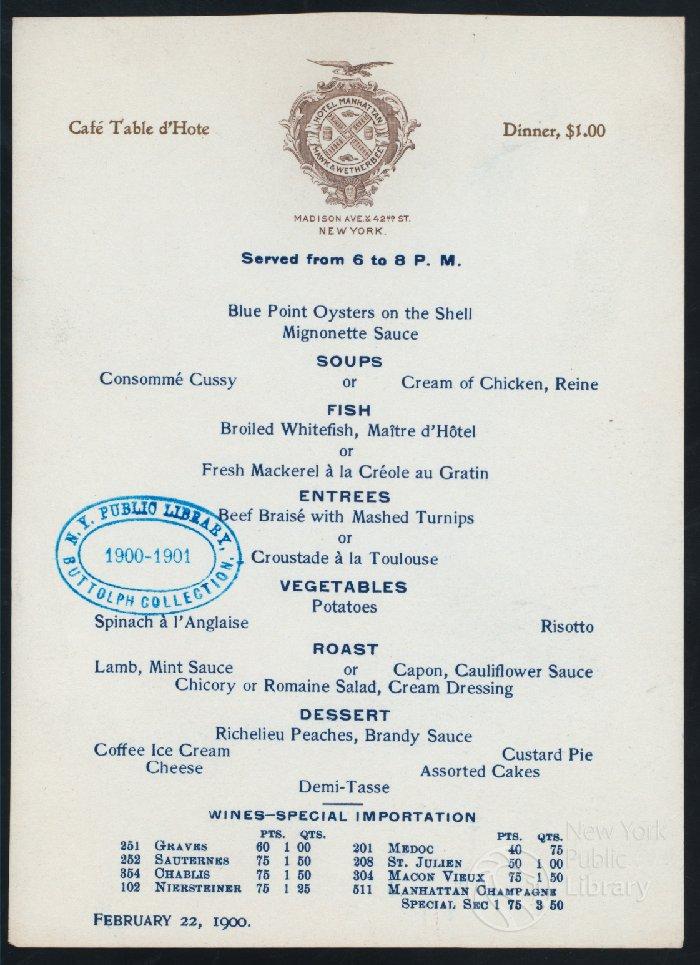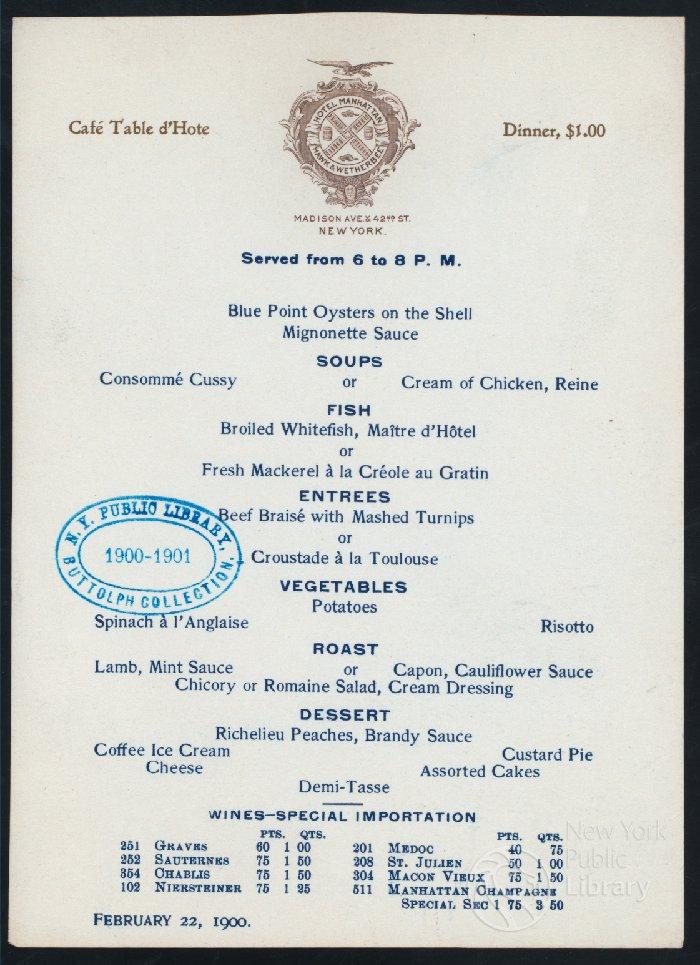What's on the Menu?
'Crowdsourcing' is building a truly voluminous database of dishes from century-old menus

Pin-money pickles or Indian meal mush -- 25 cents.
Credit: New York Public Library

Pin-money pickles or Indian meal mush -- 25 cents.
Credit: New York Public Library
If you were going out to eat a century or more ago, what would you find on the menu? How different would the choices be from today’s familiar fare?
Could you really get roast beef at a good hotel in midtown Manhattan for 40 cents, or boiled ham and spinach for $0.35? What kind of a place would serve calf’s brains and mutton kidneys?
How much would a serving of mashed turnips, “box stew” or “tripe in every style” set you back? And where would you go for fried parsnips?
One way to answer such questions would be to examine several thousand printed menus from the early 1900s and painstakingly copy the offerings and prices at each location into digital form to create a searchable database.
But that’s a forbidding task for a single scholar or even a highly motivated small group.
So the New York Public Library, which has some 40,000 menus from the United States and around the world in its holdings (25,000 of which date from before 1900), is employing the time-tested principle that many hands make light work. Librarians have been able to harness the culinary curiosity of the general public – around the United States and the world – by posting a selection of the menus online and asking for volunteers to transcribe their contents a few at a time.
This data-gathering method, called “crowdsourcing,” has been a success in other fields from politics and software beta-testing to paleontology and the search for extraterrestrial intelligence.
“For people who love food, typing up the contents of an old menu is a weird thrill,” Ben Vershbow, who manages the NYPL’s digital labs, told The New York Times. “I think people jump at an opportunity to commune with the past.”
The library’s Web-based project, titled “What’s on the Menu?” gives participants a way to contribute as much or as little as they wish.
Of course, all that volunteer work would be unusable unless each person’s transcription was stored in exactly the same form to create a single coherent, searchable database. That requires a special online interface, and NYPL applied to NEH for funding to create one.
The resulting grant made possible a tool so effective that by mid-June of 2011, some 398,078 dishes had been transcribed from 7,467 menus.
The swelling database provides fast search results. Type in “tripe” on the search bar, and in a few seconds, the software turns up hundreds of references dating from 1885 to the dawn of the 20th Century. Plans for the future of the project include maps of variations within a single food category (oyster varieties, for example) and methods of selecting a particular subset of the menus, such as those from ocean liners or railway dining cars.

